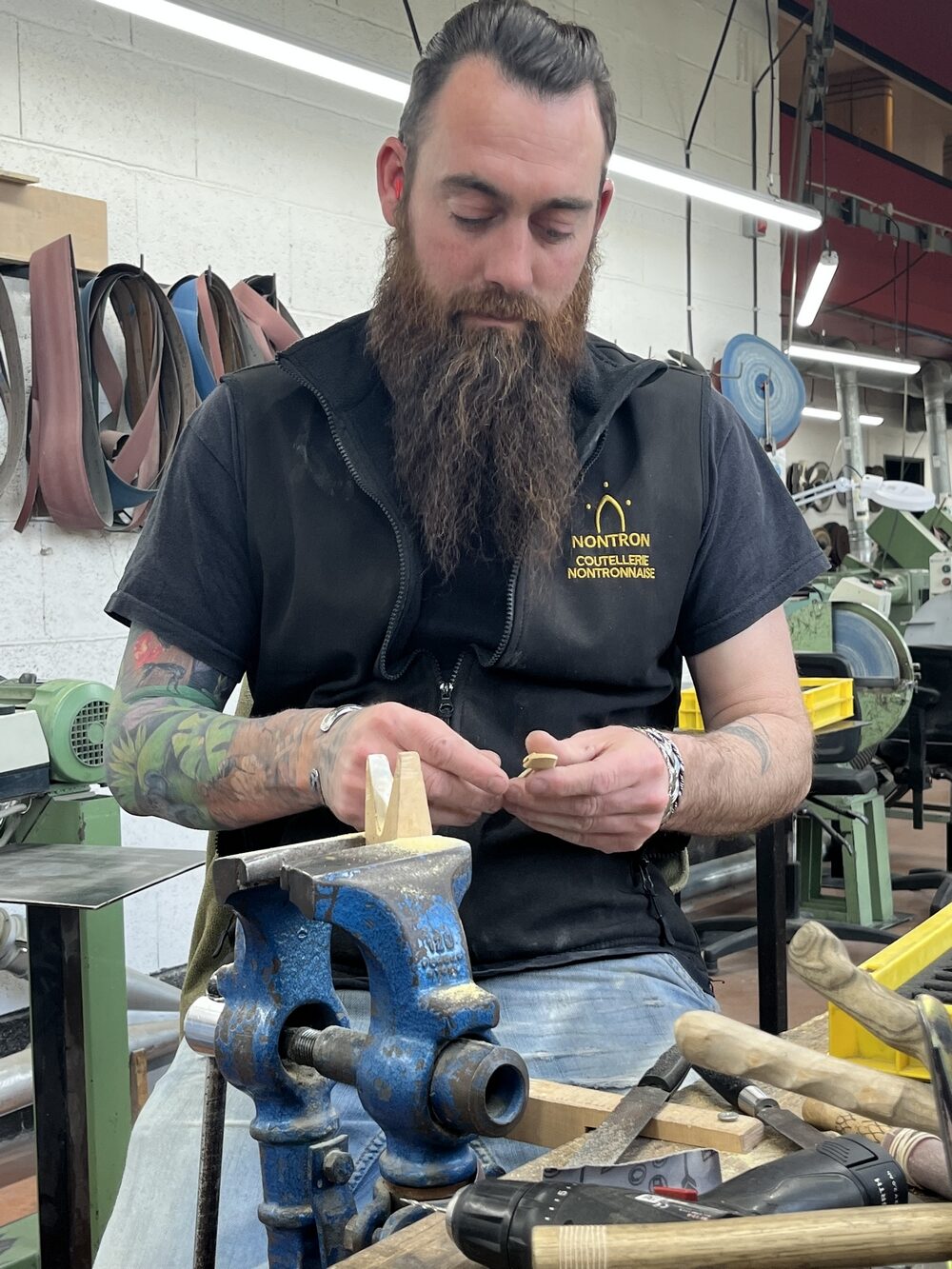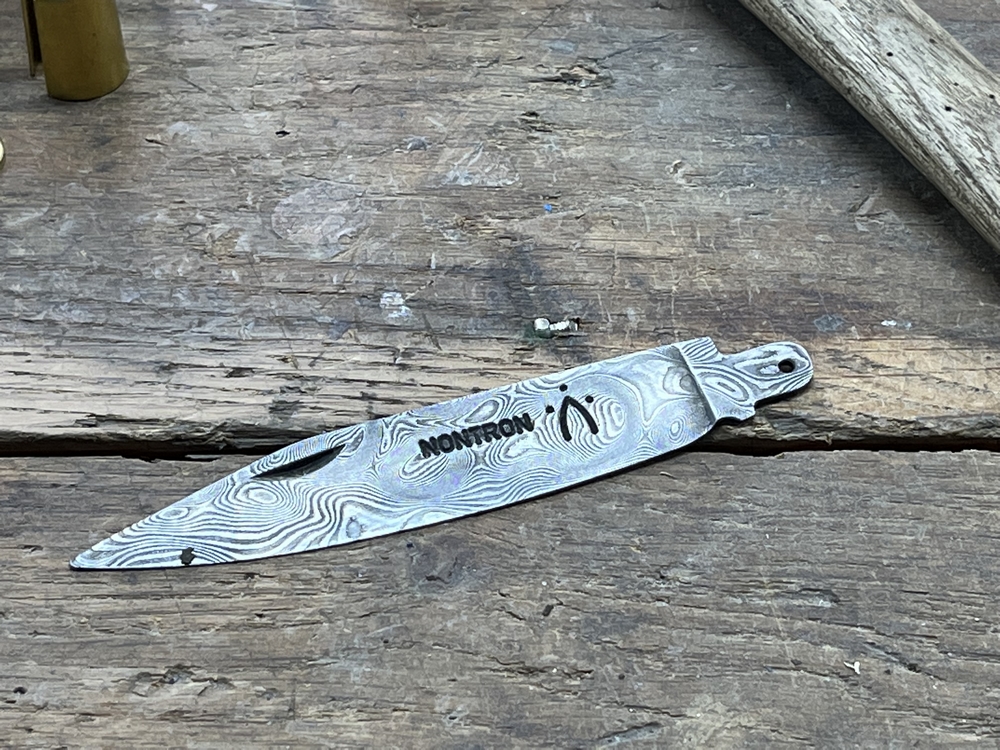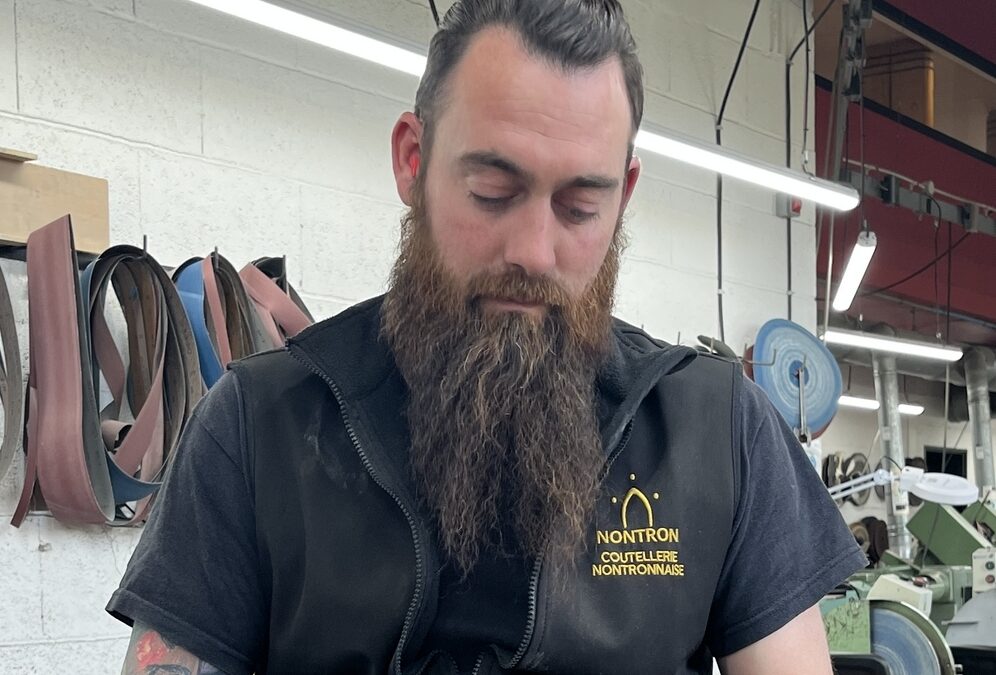Guillaume Naboulet is an artisan cutler at Coutellerie Nontronnaise. A self-described “pure iron Périgourdin”, he talks to us about his trade, his history, his know-how, his favourite knives, the Nontron knife and … of course, La Coutellerie Nontronnaise.

You’re an artisan cutler. What does that involve?
The cutler is the person who assembles the knife. It’s important to remember that there are about forty steps involved in making a knife. For folding knives, the cutler rolls the two ferrules, the stainless steel one and the brass one on top. He polishes the blade and, of course, sharpens it. He creates what is known as the insert, inserting the blade into the handle, which he then engraves with pyrography, a practice of woodcarving by burning. In the case of a knife with a Damascus blade, it is the cutler’s job to “reveal” it. Damascus blades arrive “raw”. Revealing” them means soaking them in a specific acid, then polishing them to bring out the patterns. It should never be forgotten that in cutlery, transmission is mainly oral; very few instructions are written down. So, you need a good memory, and a cutler is a versatile craftsman. What’s more, cutler’s gestures are very personal.

Two cutlers will not necessarily carry out the steps in the same order. Some will sand before, others after, and they won’t use the same strip strength. Finishing is done with a file, and everyone has their own way of holding and using it. Sometimes we experiment with new techniques. All these elements explain why each knife is truly unique and why each of us recognizes his or her own work.
How long have you been working at La Coutellerie Nontronnaise?
I joined La Coutellerie Nontronnaise in 2011 and I’m 35 years old. I haven’t always been a cutler, but I’ve always loved knives and I wanted to work in this field. What’s more, I wanted to come back to Brantôme because in my family, we’re ‘pure iron’ Périgourdins. La Coutellerie Nontronnaise is the department’s flagship company.
What is your first outstanding memory?
When I crossed the threshold. I found myself inside the building. All the materials, all the workstations and all the tasks, it was really impressive.
What was your greatest challenge?
Making the miniature knife. I was the last person to learn the method. Originally, they were demonstration knives. There is the smallness of the object, which measures between 5 millimetres and 1 centimetre, the fact of making the stick, the ferrule, the walnut, or hazelnut shell in which the knife or knives will be introduced and the sharpening of the blade. It’s not cutlery or cabinet making any more, it is jewellery making. This experience has served me quite a lot in making the Penknife n°10 and the Penknife key ring.
What are you most proud of?
The eco-friendly knife we presented at the knife festival, for which we won first prize in the cutlery design competition. It was a collective effort. When there are eight of you, you must be able to agree. What’s more, we used materials and techniques that we weren’t used to. It’s still a real source of pride for me to be involved in making the eco-friendly knife.
What Is your favourite knife?
Éric Raffy’s boxwood table knife, I think it’s beautiful. I also really like the traditional n°25 pocket knife with the ball handle.
What does it mean for you, working for Coutellerie Nontronnaise?
I was trained by La Coutellerie Nontronnaise which means something because it takes three years to become an operational cutler. I started with a training course, came back for another one and then another. I persisted, and in the end, I was hired. I’m very attached to the handcrafting of our knives and to our know-how. It’s fantastic to work for a company that makes something unique.
In your opinion, what does our cutlery represent for the town of Nontron?
It’s a real symbol for the region and therefore an exceptional asset for the town of Nontron.



